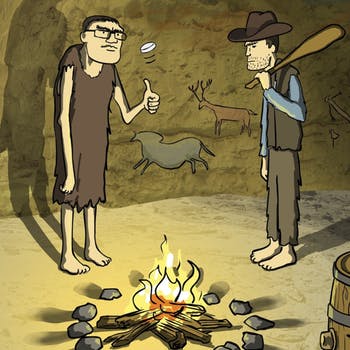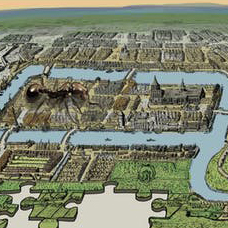-

Finding Hidden Messages in DNA (Bioinformatics I)
This course begins a series of classes illustrating the power of computing in modern biology. Please join us on the frontier of bioinformatics to look for hidden messages in DNA without ever needing to put on a lab coat.
-

Genome Sequencing (Bioinformatics II)
In this course, we will see how graph theory can be used to assemble genomes from short pieces of DNA. We will further learn about brute force algorithms and apply them to sequencing mini-proteins called antibiotics.
-

Comparing Genes, Proteins, and Genomes (Bioinformatics III)
In the first half of the course, we will compare two short biological sequences, such as genes (i.e., short sequences of DNA) or proteins. In the second half of the course, we will "zoom out" to compare entire genomes, where we see large scale mutations called genome rearrangements, seismic events that have heaved around large blocks of DNA over millions of years of evolution
-

Molecular Evolution (Bioinformatics IV)
In the first half of the course, we discuss approaches for evolutionary tree construction and show how they can resolve quandaries from finding the origin of a deadly virus to locating the birthplace of modern humans. In the second half of the course, we examine the old claim that birds evolved from dinosaurs.. Finally, you will learn how to apply popular bioinformatics software tools to reconstruct an evolutionary tree of ebolaviruses and identify the source of the recent Ebola epidemic that caused global headlines.
-

Genomic Data Science and Clustering (Bioinformatics V)
How do we infer which genes orchestrate various processes in the cell? How did humans migrate out of Africa and spread around the world? In this class, we will see that these two seemingly different questions can be addressed using similar algorithmic and machine learning techniques arising from the general problem of dividing data points into distinct clusters.
-

Finding Mutations in DNA and Proteins (Bioinformatics VI)
This course covers advanced topics in finding mutations lurking within DNA and proteins. We examine how an individual's genome differs from the "reference genome" of the species. We also show how to identify the function of a protein even if it has been bombarded by so many mutations compared to similar proteins with known functions that it has become barely recognizable.
-

Bioinformatics Capstone: Big Data in Biology
In this course, you will learn how to use the BaseSpace cloud platform developed by Illumina (our industry partner) to apply several standard bioinformatics software approaches to real biological data.
Bioinformatics
When you complete this Specialization, you will learn how to answer many questions in modern biology that have become inseparable from the computational approaches used to solve them. You will also obtain a toolkit of existing software resources built on these computational approaches and that are used by thousands of biologists every day in one of the fastest growing fields in science.